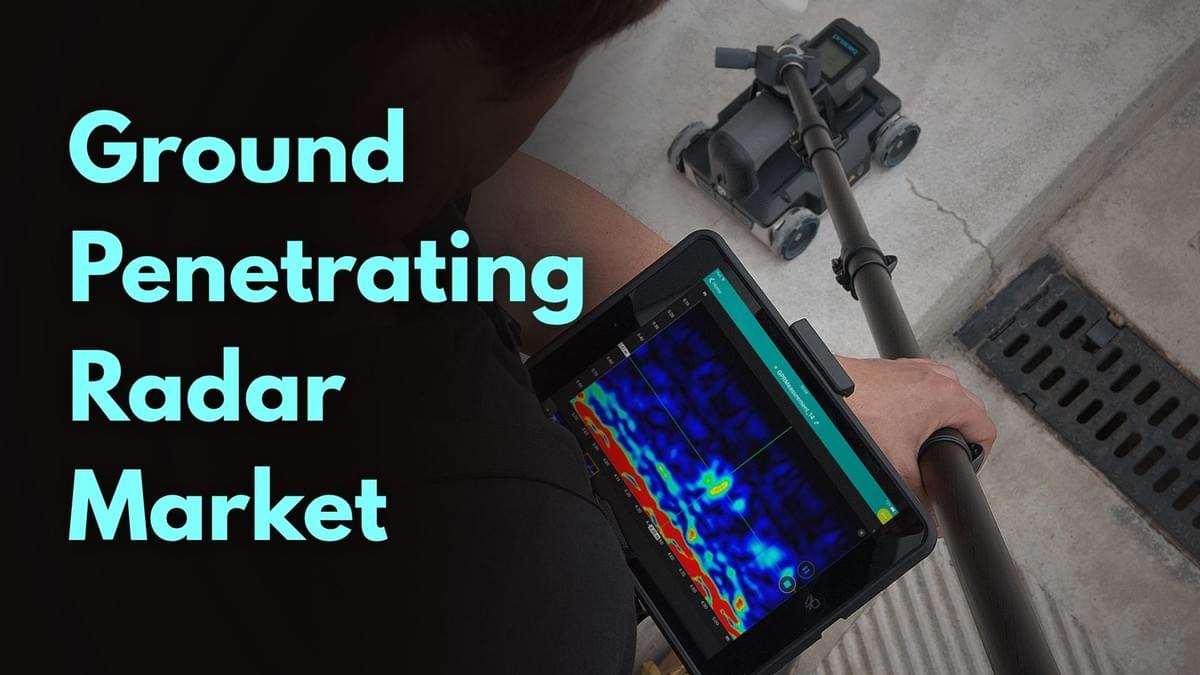According to Fortune Business Insights™, the global Ground Penetrating Radar Market was valued at USD 336.2 million in 2021 and is projected to grow from USD 367.3 million in 2022 to USD 612.6 million by 2029, exhibiting a CAGR of 7.58% during the forecast period. This robust growth trajectory is attributed to the rising demand for real-time subsurface imaging and the increasing integration of GPR systems in diverse applications, particularly in infrastructure development, defense, and utility detection sectors.

Competitive Landscape
The global GPR market is moderately fragmented, with several key players adopting strategies like strategic partnerships, product innovation, and geographic expansion to strengthen their market presence.
Key Companies Profiled:
- Chemring Group (U.K.)
- Geophysical Survey Systems Inc. (U.S.)
- Geoscanners (U.K.)
- Guideline Geo (Sweden)
- IDS GeoRadar (Italy)
- Israel Aerospace Industries Ltd. (Israel)
- Pipehawk Plc (U.K.)
- Raytheon Technologies Corporation (U.K.)
- Radiodetection Ltd. (U.K.)
- Saab AB (Sweden)
- Thales Group (France)
Source:
https://www.fortunebusinessinsights.com/ground-penetrating-radar-market-102600
Market Overview and Key Drivers
GPR systems offer non-invasive imaging capabilities, enabling the detection of underground utilities, structural defects, and anomalies without excavation. The global surge in construction activities, increasing focus on public safety, and the adoption of non-destructive testing (NDT) methods are fueling market expansion.
Key Growth Drivers:
- Rising Demand for Damage Prevention: GPR is increasingly utilized to avoid damaging underground utilities during excavation. These systems can detect both metallic and non-metallic objects, improving site safety and reducing repair costs.
- Infrastructure Modernization Projects: Government-backed infrastructure upgrades, including roadways, airports, and smart cities, are boosting GPR adoption for mapping and structural analysis.
- Adoption in Diverse Sectors: Applications in archaeology, disaster response, geology, and environmental assessment continue to broaden GPR’s market potential.
Market Restraints
Despite its versatility, GPR technology faces challenges:
- Subsurface Limitations: High moisture content and clay-rich soils can absorb radar signals, reducing penetration depth and resolution.
- Interpretation Complexity: Accurate data interpretation requires skilled personnel and advanced software, posing barriers to broader commercial use.
Market Segmentation
By Product Type, the ground penetrating radar market is categorized into handheld systems, cart-based systems, and vehicle-mounted systems. Among these, vehicle-mounted systems are expected to dominate the market during the forecast period. Their ability to efficiently cover large survey areas makes them highly suitable for extensive infrastructure inspections. These systems are widely used for transportation-related evaluations, including road surface scanning, bridge deck analysis, and railway assessments, offering high precision with minimal disruption to ongoing operations.
By Offering, the market is segmented into equipment and services. While equipment forms the foundational component of GPR technology, it is the services segment that is projected to grow at the fastest pace. This growth is primarily fueled by rising demand from construction, military, and law enforcement sectors that require professional expertise for subsurface mapping, structural inspection, and site safety evaluation. The increasing need for accurate data interpretation and real-time decision-making is boosting the adoption of GPR-based service solutions.
By Application, the market includes utility detection, concrete investigation, transportation infrastructure, archaeology, geology and environmental studies, and law enforcement and military applications. Among these, concrete investigation is anticipated to be the fastest-growing application, particularly in regions such as China, where rapid urbanization is driving the demand for non-destructive testing (NDT) solutions in the civil and structural engineering domains. The use of GPR in concrete analysis ensures precise detection of rebar, voids, and cracks, making it a critical tool for infrastructure safety and longevity.
Key Market Trends
1. Technological Advancements in Deep Radar Systems
Advances in signal processing, real-time sampling, and signal-to-noise ratio (SNR) have increased the penetration depth and imaging clarity of GPR systems. These improvements are expanding GPR use in mining, deep geological surveys, and large-scale construction projects.
2. Integration of AI for Enhanced Analysis
In April 2022, IDS GeoRadar, a Hexagon company, launched Ai.DA, an AI-powered analytical software integrated with its Guardian platform. Ai.DA enhances radar data analysis by distinguishing between actual slope movement and noise, thereby improving predictive insights in geotechnical risk monitoring.
Regional Insights
North America – Dominant Region (2021 Share: 38.91%)
- Market Size (2021): USD 130.8 million
- Growth is driven by:
- Increased defense spending
- Extensive use of GPR in military base security
- Demand for advanced utility mapping during infrastructure upgrades
Europe
- Stable growth expected with increased GPR adoption in urban utility detection, archaeological surveys, and environmental applications
- Key markets: U.K., Germany, France
Asia Pacific – Fastest-Growing Region
- Countries like India, China, and Southeast Asia are rapidly adopting GPR for:
- Smart city development
- Road and bridge construction
- Disaster mitigation and environmental monitoring
Key Industry Developments
March 2020 – Strategic Partnership
IDS GeoRadar collaborated with World Sensing to introduce a comprehensive mine safety monitoring solution, combining slope stability insights with GPR technology for enhanced underground operation safety.
April 2022 – AI Software Launch
IDS GeoRadar unveiled Ai.DA, an AI-based software tool for its Guardian slope monitoring platform, enabling more accurate slope movement detection and noise differentiation. This innovation is expected to reshape geotechnical assessment practices and accelerate the adoption of intelligent GPR systems.
No responses yet